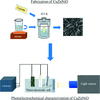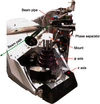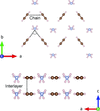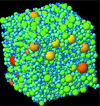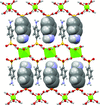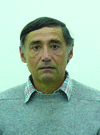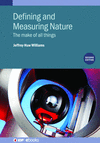issue contents
December 2020 issue

Cover illustration: 3D-printed Escher lizards used to teach concepts of symmetry. (Top) Three identical lizards assembled in three different ways to highlight the three types of threefold rotational points; (bottom) the lizards can tile the plane without leaving empty gaps. Courtesy of Lluís Casas [J. Appl. Cryst. (2020), 53, 1583–1592].
scientific commentaries
Open  access
access
 access
accessLahey-Rudolph and co-workers [J. Appl. Cryst. (2020), 53, 1169–1180] have reported a rapid and sensitive method to screen for crystals in cellulo – a welcome addition to the structural biology toolbox.
research papers
Open  access
access
 access
accessElectron diffraction experiments on crystals of membrane proteins grown in lipidic mesophases have not been possible owing to a thick layer of viscous crystallization medium around the crystals. Here it is shown that focused ion beam milling at cryogenic temperatures (cryo-FIB milling) can remove the viscous layer, and high-quality electron diffraction on a FIB-milled lamella of a bacteriorhodopsin 3D crystal is demonstrated.
A novel one-step synthesis of Cu2ZnNiO3 complex oxide and its utilization in solar water splitting is described.
Open  access
access
 access
accessAn experimental setup is described that uses a hyperspectral imaging detector to collect time-resolved X-ray diffraction information from a complete discharging AA size battery, using a commercial alkaline Zn–Mn cell as a proof of concept. The work is complemented by time-resolved in situ X-ray computed tomography of an identical battery cell.
Open  access
access
 access
accessDocumentation is presented for the first ptychographic X-ray computed tomography experiment on the NanoMAX beamline, along with a quantitative analysis of the reconstruction quality and a discussion of possibilities for future improvements.
Download citation


Download citation


Rietveld and Debye function analyses of X-ray diffraction data, combined with high-resolution transmission electron diffraction and nitrogen sorption techniques, were used to investigate annealed 4 at.% Sc-doped anatase.
Open  access
access
 access
accessA large-area focusing supermirror manufactured with ultra-precision machining has been employed at the SOFIA reflectometer at the J-PARC Materials and Life Science Experimental Facility, and a gain of approximately 100% in the neutron flux was achieved. For future upgrade, optics using the focusing mirror for multi-incident-angle neutron reflectometry are proposed, in order to reveal evolutions of interfacial structures for operando measurements with a wide reciprocal space.
Download citation


Download citation


Open  access
access
 access
accessThe crystal structures of non-substituted and Mo-substituted neodymium tungstates are described in detail through neutron diffraction and high-resolution X-ray diffraction. Combined X-ray and neutron diffraction refinements and electron probe micro-analysis were employed to locate Mo atoms in the crystal structure of Nd6−yW1−zMozO12−δ (z = 0, 0.25), while X-ray absorption spectroscopy in the near-edge regions confirmed no changes in the oxidation states of Nd and W.
Grazing-incidence X-ray scattering is a common technique to elucidate nanostructural information for thin-film samples, but depth-resolving this nanostructure is difficult using a single or few images. An in situ method to extract the film thickness, the index of refraction and depth information using scattering images taken across a range of incident angles is presented.
This paper describes a widely applicable protein X-ray crystallography method that enables the collection of high-quality diffraction data from single crystals across a wide range of temperatures at and above room temperature.
A fully merged GaN thin film with a thickness of only several hundred nanometres has been grown by multiple epitaxial lateral overgrowth (multiple-ELOG) using a graphene mask that decomposes during the growth process. A mechanism for multiple-ELOG through self-decomposing graphene due to GaN template decomposition during homoepitaxy is proposed.
Algorithms and procedures are reported that account for instrumental profiles with arbitrary peak shapes in structural refinements using the reverse Monte Carlo method as implemented in the RMCProfile software.
Download citation


Download citation


An in situ single-crystal X-ray diffraction sapphire capillary pressure cell capable of generating 1500 bar (150 MPa) of pressure is presented and tested by comparing the compressibility of the small organic molecule hexamethylenetetramine in its hydrogenated and deuterated forms.
CCDC reference: 2008808
The acetylene–ammonia co-crystal exhibits significant anisotropic thermal expansion under conditions relevant to Saturn's icy moon Titan. The expansion is found to occur primarily along the c axis of the orthorhombic structure (about 2% extension over the temperature range 85–120 K).
A new reconstruction approach is presented that can directly yield physico-chemical images and overcome the parallax problem in X-ray diffraction computed tomography experiments.
Download citation


Download citation


A homologous compound (Ga1−αAlα)2O3(ZnO)m of a long-period structure in thermoelectric composite materials was analysed by a unified structure model in (3 + 1)-dimensional superspace.
A scientific computing approach is described for ptychographic reconstructions at Sirius, the new fourth-generation Brazilian synchrotron.
An estimate of synchrotron hard X-ray incident beam polarization is obtained by partial two-dimensional image masking followed by integration.
Open  access
access
 access
accessCombined coherent X-ray diffraction imaging and wide-angle X-ray diffraction is demonstrated to study the morphology, internal structure and mineralogy of shale fragments. Estimates of the unconnected nanoscale pore structure of shale microparticles are obtained.
A simple formulation of the structure factor for the dispersion of polydisperse spheres in the Percus–Yevick approximation is presented. Full analytical expressions for standard radius distributions are obtained (Schulz, normal, inverse Gaussian). Recent experimental structure factors from Apollonian emulsions and from dense systems of repulsive polydisperse silica spheres are discussed.
teaching and education
Free 

The use of 3D-printed tiles and polyhedra to teach periodicity, aperiodicity and related crystallographic concepts is described.
Free 

This contribution describes a ten-year experience of teaching a computer-based inorganic chemistry laboratory course to undergraduates. The course aims to introduce students to structure analysis of simple inorganic molecular solids with a pragmatic approach. Atomic coordinates of molecular crystals and advanced visualization methods available in the Cambridge Structural Database and its associated software allow students to link newly learned crystallographic skills with knowledge acquired in earlier basic courses in inorganic, organic and physical chemistry.
computer programs
Open  access
access
 access
accessThe program speckle-tracking is described, an open-source software suite for performing wavefront metrology and sample imaging from projection in-line holograms of a sample.
Open  access
access
 access
accessEXEQ/InEXEQ software is a dedicated tool for single-crystal orientation at the HFM-EXED neutron scattering facility, and also a mandatory step of the proposal submission process.
Added functionality makes MaXrd more versatile with the ability to visualize crystal structures and domains. New tools make the construction of custom structures possible, particularly inclusion compounds, as well as the acquisition of simulated maps of reciprocal space.
laboratory notes
A simple way to modify powder diffraction specimen holders to allow for the presentation of filter papers is given.
crystallographers
Free 

Free 

book reviews
Free 



 journal menu
journal menu











